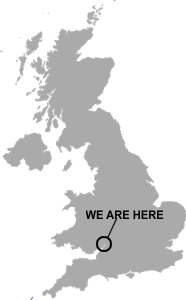Chancellor Rishi Sunak last week confirmed the details of how the Coronavirus Job Retention Scheme (CJRS), also known as the furlough scheme, will gradually be wound down over the coming months, closing at the end of October.
Whilst the scheme has obviously been a lifeline for many businesses and individuals, with over 7 million employees effectively having most of their wages paid by the Government, it’s clearly not sustainable indefinitely. From next week, we will start to see the effects of changes to the scheme that will include contributions to employees’ furlough pay by their employers.
Despite the CJRS, we are increasingly hearing businesses making redundancy announcements or forecasting job losses. As employers are required to contribute to furlough pay, albeit relatively modestly to begin with, we are sure to see the number of job losses increase as even a small amount of pay may be too much for some businesses to bear.
Here we set out the winding up of the CJRS in a timeline of events:
10 June: Next Wednesday. The last day that employers put employees on the furlough scheme for the first time. The scheme will close to new entrants on the 30th June. Because there is a minimum 3 week furlough period this will be the last day that, in the Government’s words, an employer can furlough an employee for the first time. This is slightly grey but we think that it means anyone who has been furloughed since the induction of the furlough scheme can be furloughed again after June 30.
1 July: Flexible furlough begins. From 1st July, employers can bring employees back to work who have previously been furloughed for any amount of time and any shift pattern. They’ll still be able to claim CJRS grant for their employees’ normal hours not worked. Any working hours arrangement that you agree with your employee must cover at least one week and be confirmed to the employee in writing.
1 August: Employers will have to pay NIC’s and pension contributions of furloughed employees. In other words they will no longer be able to reclaim them through the CJRS.
1 September: The government will pay 70% of wages of furloughed workers up to a cap of £2,187.50 pro-rata’d for the hours the employee does not work. Employers will pay ER NICs and pension contributions and 10% of wages to make up 80% total up to a cap of £2,500. Our interpretation is that if employers cannot meet these payments, they will not be able to keep staff on the furlough scheme and may need to consider lay-off or redundancy.
1 October: The government will pay 60% of wages up to a cap of £1,875 pro-rata’d for the hours the employee does not work. Employers will pay ER NICs and pension contributions and 20% of wages to make up 80% total up to a cap of £2,500 and again we think these contributions will be compulsory in order to keep employees on furlough.
31 October: Furlough scheme ends.
We should note that this timeline seems to have been put in place without any correlation with what we are seeing regarding the easing of lockdown restrictions. Whilst we would hope that Government departments talk to one another, we haven’t heard anything about a contingency plan should there be a second spike in infections or other problems.
One thing we have learned about the Government during this crisis however is that they can move quickly when they want to so should the worse happen, we would hope that some sort of plan is already being worked on.
There are one or two finer details to iron out regarding the changes to the CJRS, but we’ll be updating our letter templates, available from or COVID-19 toolkit, to reflect the changes including the part-time furlough option, as soon as we have all of the relevant information. In the meantime you can contact us on phone on 01452 331331 or e-mail This email address is being protected from spambots. You need JavaScript enabled to view it.



